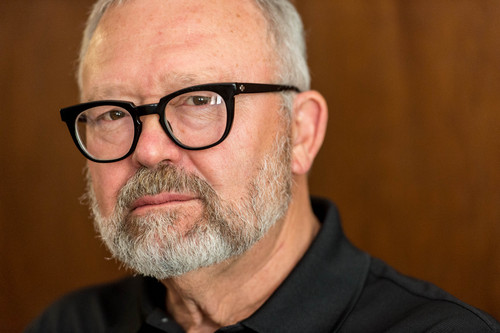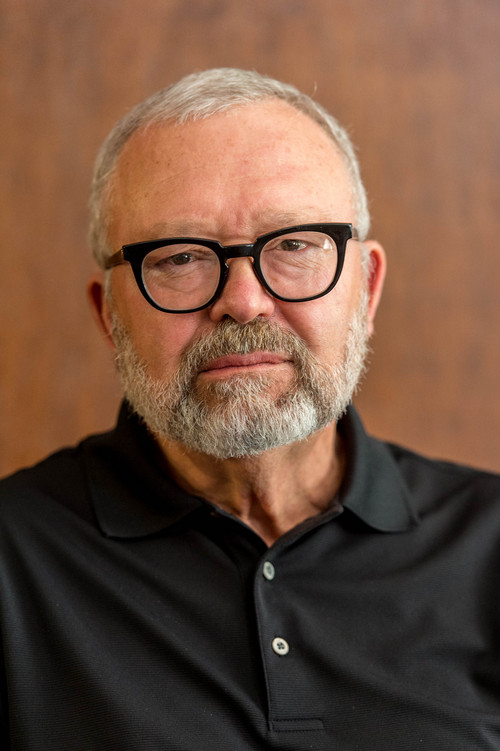This is an archived article that was published on sltrib.com in 2014, and information in the article may be outdated. It is provided only for personal research purposes and may not be reprinted.
Nearly two decades after the Oklahoma City bombing, a Utah attorney who is fighting to obtain FBI records related to the attack will have his day in court.
On Monday, a three-day trial is scheduled to begin in U.S. District Court in Salt Lake City on a lawsuit by lawyer Jesse Trentadue. He filed a request under the Freedom of Information Act (FOIA) seeking documents and videotapes from the bombing investigation — including one tape he believes shows two men exiting a Ryder truck parked in front of the Alfred P. Murrah Federal Building and the detonation of explosives in the vehicle.
The suit claims the FBI failed to conduct a search reasonably calculated to locate all records in the agency's possession. Trentadue is asking for an order allowing him to search for videotapes and documents at FBI locations, including field offices in Oklahoma City and Los Angeles, and requiring the agency to produce the records he requested.
The FBI counters it has satisfied its obligation to search for the records and points out the agency has released 200 pages of documents and 30 tapes to Trentadue. The FBI also says if the trial judge does conclude its searches were inadequate, he should order the agency to conduct one or more additional searches rather than let Trentadue do it.
Trentadue believes the records will provide information about the death of his brother in a federal prison cell in Oklahoma City a few months after the April 19, 1995, bombing that killed 168 people. Kenneth Trentadue, a 44-year-old convicted bank robber who was being held on an alleged parole violation, was found hanging from a noose made of torn bed sheets on Aug. 21, 1995.
Several investigations by state and federal agencies ruled the death a suicide. His family, though, believes the inmate was mistaken for a bombing conspirator dubbed John Doe No. 2 by authorities and that guards strangled him with a set of plastic handcuffs in an interrogation that got out of hand — an allegation that federal officials adamantly deny.
Jesse Trentadue believes John Doe No. 2 was Richard Lee Guthrie, who was part of a gang that carried out bank robberies in the Midwest. He said his brother and Guthrie were about the same height and build, both had a tattoo of a dragon on the left arm and Kenneth Trentadue drove a Chevy pickup truck, the same kind of vehicle John Doe No. 2 was reported to be driving.
Among the materials Trentadue is seeking are the original dashboard camera videotape of an Oklahoma Highway Patrol officer arresting bomber Timothy McVeigh; surveillance tapes taken on the morning of the bombing by cameras on the Murrah building and surrounding buildings, including one he says shows the truck with the explosives; and all reports that describe the videotapes.
Most of the materials already produced by the FBI are irrelevant because they concern videotapes from other locations, including tapes of newscasts about the bombing, Trentadue says. The Oklahoma Highway Patrol videotape he received was edited and not the original, he says, and none of the other tapes came from exterior cameras directed at the Murrah building.
Trentadue says public documents he already has and news reports contain evidence of the existence of the tapes and reports he wants. The documents he says back up his claims about an inadequate search include the following:
• An FBI report that says a confidential source called one of its agents on Oct. 27, 1995, and said the NBC television show "Dateline" had been contacted by an unknown attorney offering to sell a copy of the surveillance tape showing the activity outside the Murrah building before the blast.
The attorney, who purported to represent an FBI agent in Los Angeles, said the tape shows a Ryder truck pulling up at the building and two men, one of whom resembles McVeigh, getting out of the vehicle, according to the source.
"The source related that the attorney is asking for over one million dollars for the tape," the report says.
• A statement given to the FBI by an employee of the firm that owned the Journal Records Building in Oklahoma City. The employee said his boss instructed him to get the videotape from four cameras stationed on the outside of the building because he thought they might have captured a photograph of the persons responsible for the bombing.
• A list of videotapes reviewed by an FBI agent for sounds or images of the bombing. Of the dozen tapes, the review is marked as having "positive" results for two of them, which came from buildings near the Murrah building.
• A 2004 article by The Associated Press that says a Secret Service document written shortly after the bombing described security video footage of the attack and witness testimony that suggested McVeigh may have had accomplices at the scene. The article notes the government has said McVeigh drove the truck himself and insisted it never had any video of the bombing or the scene of the Murrah building in the minutes before the explosion.
The bench trial will be heard by Judge Clark Waddoups. Potential trial witnesses include FBI agents, evidence technicians and an investigator for McVeigh's legal defense team. Trentadue is acting as his own attorney but may also testify.
Trentadue said there is more at stake in his legal battle than justice for his brother. The case will not only hold the government accountable for its actions, he said, but also set a standard for the right of the public to know what its government is doing.
He believes the whole story about what happened to his brother will be known eventually.
"I think someday someone will come forward," Trentadue, 67, said. "I may not be alive but I think someday the truth will come out."
McVeigh was convicted of carrying out the bombing. He was executed in 2001.
Conspirator Terry Nichols is serving a life sentence at the U.S. Penitentiary Administrative Maximum Facility in Florence, Colo.
Guthrie was arrested on bank robbery charges in 1996 and struck a plea deal with prosecutors. A few months later, he was found hanged in his cell in Kentucky in what was ruled a suicide.
Twitter: @PamelaMansonSLC













